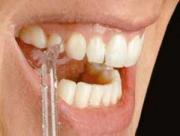Fixed Prosthesis
What are crowns and bridges?
Crown: Refers to the restoration of teeth using materials that are fabricated by indirect methods which are cemented into place. A crown is used to cap or completely cover a tooth.Traditionally, the teeth to be crowned are prepared by a dentist and records are given to a dental technician to fabricate the crown or bridge, which can then be inserted at a subsequent dental appointment.
Which are the best material for crowns?
To select the best material for your case function and esthtics is considered. The dentist will make a decission upon tooth position,the gingival status.,the amount of gingiva you display while smiling,the discolorations of and the functions of the teeth. For crown fabrication there are several obtions like metal crowns made either from precious or nonprecious alloys,different types of porcelain,acrilic composite etc.
How is a crown made?
The tooth is prepared, or shaped by the dental drill. Enamel and some dentin is shaved from around the sides of the tooth and the top of the tooth resulting in a very specific shape. The patient will usually be anesthetized with local anesthetic (“novacaine”) for this.
A temporary cap of plastic or metal is made to fit the tooth, so that the tooth will be covered between visits.
An impression is taken of the tooth with a small tray of rubber or silicone-like material. Steps 1-3 can frequently be accomplished in one visit.
The impression will go to a dental lab where it is poured. The crown is made to fit the poured model. This usually takes 1-3 weeks.
The patient returns to the dental office. The temporary cap is removed and the permanent cap is placed. It should be a tight fit on the tooth and cement is used to place it. The bite is adjusted.





Full Porcelain Crown
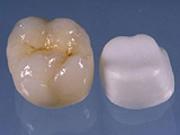 By eliminating the need for the supportive metal core, an esthetic all-ceramic crown can be created with a reduced thickness of material. This makes them a more favorable treatment choice in areas with limited space. Additionally, the elimination of the metal core allows for light transmission through the porcelain for better optical, life-like properties and a higher level of esthetics. All-ceramic materials continue to evolve in strength and durability, but caution should still be exercised for areas of the mouth requiring heavy function. Continuing research is exploring the significant vulnerabilities of the porcelain systems in such areas.The predominant material choice for all-ceramic crowns today is either zirconia, or aluminous materials. They provide a metal-free esthetic option with a number of benefits.
By eliminating the need for the supportive metal core, an esthetic all-ceramic crown can be created with a reduced thickness of material. This makes them a more favorable treatment choice in areas with limited space. Additionally, the elimination of the metal core allows for light transmission through the porcelain for better optical, life-like properties and a higher level of esthetics. All-ceramic materials continue to evolve in strength and durability, but caution should still be exercised for areas of the mouth requiring heavy function. Continuing research is exploring the significant vulnerabilities of the porcelain systems in such areas.The predominant material choice for all-ceramic crowns today is either zirconia, or aluminous materials. They provide a metal-free esthetic option with a number of benefits.
The advantages of the full ceramic crowns
- Metaloceramic restorations under spotlight,flashlight of the camera or under discolights appear as a dark spot and gives the impression that one hasn’t got tooth. Contrary to that the light translucency of the full ceramic restorations make them appear very natural.
- They are very tooth like materials and don’t have the fake and matt appearance of the metaloseramic crowns.That’s why they are prefered for the esthetic front teeth restorations
- You do not see any dark line at the gingival margin at the full ceramic restorations.
- The metaloceramic crowns are cemented mechanically whereas the full ceramic crowns are generally bonded to teeth with special bonding tecniques.That is why their retention are superior to the metaloceramic crowns.
- The risk for some metallic allergies like nickel is not seen with full ceramic restorationsAlt yapıda kullanılan bazı metallere karşı (nikel vb.) oluşabilecek allerji riski full porselenlerde yoktur.
- After gingival recessions the shadow of the dark metallic substructure of the metaloceramic crowns comes to the surface whereas the full ceramic crowns maintain the colour integrity and do not appear unesthetic
Bridge:
A bridge, also known as a fixed partial denture, is a dental restoration used to replace a missing tooth by joining permanently to adjacent teeth or dental implants.
A dental bridge is a false tooth, known as a pontic, which is fused between two porcelain crowns to fill in the area left by a missing tooth. The two crowns holding it in place that are attached onto your teeth on each side of the false tooth. This is known as a fixed bridge. This procedure is used to replace one or more missing teeth. Fixed bridges cannot be taken out of your mouth as you might do with removable partial dentures.
In areas of your mouth that are under less stress, such as your front teeth, a cantilever bridge may be used. Cantilever bridges are used when there are teeth on only one side of the open space. Bridges can reduce your risk of gum disease, help correct some bite issues and even improve your speech. Bridges require your commitment to serious oral hygiene, but will last as many ten years or more.
How is a bridge fabricated?
A bridge is fabricated by reducing the teeth on either side of the missing tooth or teeth by a preparation pattern determined by the location of the teeth and by the material from which the bridge is fabricated. In other words, the abutment teeth are reduced in size to accommodate the material to be used to restore the size and shape of the original teeth in a correct alignment and contact with the opposing teeth.





What Types of Dental Bridges Are Available?
There are three main types of dental bridges:
- Traditional bridges involve creating a crown for the tooth or implant on either side of the missing tooth, with a pontic in between. Traditional bridges are the most common type of bridge and are made of either porcelain fused to metal or ceramics.
- Cantilever bridges are used when there are adjacent teeth on only one side of the missing tooth or teeth.
- Maryland bonded bridges (also called a resin-bonded bridge or a Maryland bridge) are made of plastic teeth and gums supported by a metal framework. Metal wings on each side of the bridge are bonded to your existing teeth The resin retained bridge is a good treatment option for many missing teeth as it is relatively cheap when compared to alternatives such as dental implants, requires little or no damage to the surrounding teeth during preparation for placement, and it is well tolerated by patients. Typical success rates are quoted as being as high as 80% after 15 years in the anterior maxilla.Maryland bridges work best when the teeth are front teeth adjoining healthy teeth that do not have large fillings.The Maryland Bridge is considered to be an ultra-conservative treatment with minimal grinding of the adjoining teeth.
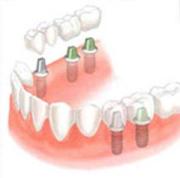
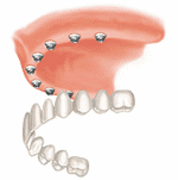
What type of materials are available for dental bridges?
The materials used for the bridges include gold, porcelain fused to metal, or in the correct situation porcelain alone. The amount and type of reduction done to the abutment teeth varies slightly with the different materials used. The recipient of such a bridge must be careful to clean well under this prosthesis.
What Is the Process for Getting a Dental Bridge?
During the first visit for getting a dental bridge, the abutment teeth are prepared. Preparation involves recontouring these teeth by removing a portion of enamel to allow room for a crown to be placed over them. Next, impressions of your teeth are made, which serve as a model from which the bridge, pontic, and crowns will be made by a dental laboratory. Your dentist will make a temporary bridge for you to wear to protect the exposed teeth and gums while your bridge is being made.
During the second visit, your temporary bridge will be removed and the new permanent bridge will be checked and adjusted, as necessary, to achieve a proper fit. Multiple visits may be required to check the fit of the metal framework and bite. This is dependent on each individual’s case. If the dental bridge is a fixed (permanent) bridge, your dentist may temporarily cement it in place for a couple of weeks to make sure it is fitting properly. After a couple weeks, the bridge is permanently cemented into place.
Metalfree zirconium bridges
 The fabrication of all-ceramic, esthetic, and durable anterior crowns and bridges is made possible through the combination of new technology and new materials. The new technology is CAD/CAM, computer aided design/computer aided manufacturing. It fabricates an all-ceramic (Zirconia) framework that is not only very thin, light, and durable, but also available in various tooth color shades that improve the life-like esthetics of the final restoration.
The fabrication of all-ceramic, esthetic, and durable anterior crowns and bridges is made possible through the combination of new technology and new materials. The new technology is CAD/CAM, computer aided design/computer aided manufacturing. It fabricates an all-ceramic (Zirconia) framework that is not only very thin, light, and durable, but also available in various tooth color shades that improve the life-like esthetics of the final restoration.
One of the newer materials, Zirconia (ZRO2)—an oxidized form of the Zirconium metal—is able to resist high-stress areas internally, such as sharp line angles in the tooth preparation, grinding damage during internal adjustment, and stresses generated by chewing or thermal changes in the mouth. In addition, transformation-toughening gives Zirconia excellent mechanical properties: high flexural strength—900 Mpa to 1.2 Gpa—and toughness—7–8 MP.M a –0.5.
The first step in using dental CAD/CAM is tooth preparation. The second step involves taking an impression, not by pressing a soft material over the tooth, but by taking a picture with a special camera that sends the prepared tooth’s exact dimensions into a computer.
The cosmetic dental restoration is next designed with the aid of a computer, and then your Houston cosmetic dentist selects a material that is colored to match your specific tooth. The material is then placed into a miniature milling machine. In just a few minutes it produces a precise, custom-fitting cosmetic dental restoration.
Finally, the new cosmetic dental restoration is test-fitted, color adjusted, and bonded in place. After your bite and fit are checked, you’ll have a new, CAD/CAM cosmetic dental restoration – in just one appointment
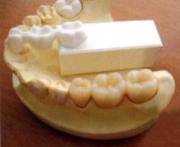 What is zirconium?
What is zirconium?
Zirconium dioxide is a high strength ceramic material, which is, for example, used in aerospace technology. Chemically it is a composition of the rare element Zirconium and oxygen, formulated ZrO2. It can also be referred to as Zirconium oxide or Zircon oxide. Color: White – Ivory Hardness: High
Characteristics of Zirconium:
- It has extremely high tensile strength, and is referred to as ceramic steel.
- It virtually eliminates any allergic reactions.
- It is not an electrical conductor, so it doesn’t generate an electrical charge. Electrical conductivity contributes to the corrosion of other metals in the mouth.
- Being non-metallic, there is no corrosion. Therefore, gingival reactions like the usual “black line” at the gumline of traditional porcelain-fused-to-metal restorations, will not occur.
- As an insulator, it protects against unpleasant hot/cold sensitivity in the mouth.
Zirconium oxide ceramic materials have been used for over twenty years in medicine, mainly for hip replacements. These materials have shown over this long history that they are fully biocompatible. And it only stands to reason–they consist mainly of minerals which are also found in natural bone tissue.
Applications?
- Single crown restorations
- 3-6 unit bridges(anatomik lenght of up to 38mm.)
- Implant supported crown and bridges
How are full ceramic restorations manufactured using advanced Zirconium CAD/CAM technology?
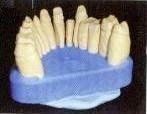 |
The dentist takes an impression, and makes a model that exactly replicates the patient’s teeth. |
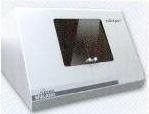 |
This very precise model is then placed into a sophisticated laser- and camera-supported scanner which re-creates a three-dimensional picture on the computer. |
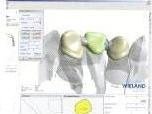 |
The restoration is now designed with the help of the computer, using techniques similar to what is used in the aerospace industry. The possibilities of the design are virtually unlimited, ranging from single crowns to the most elaborate bridgework |
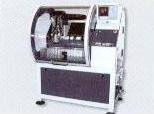 |
Once the whole design process is finished, all the data is sent to the Zirconium milling machine. |
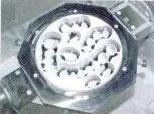 |
The Zirconium milling machine will now use this data to mill an extremely precise restoration out of a Zirconium ZENO Zr disc. |
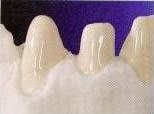 |
Finally, these objects are then cut out and sintered in a special high temperature furnace. Then the crown and bridge substructure is ready to be veneered with a special ceramic material (ZIROX), which is formulated to mimic the color, translucency, and texture of your teeth as accurately as possible. |
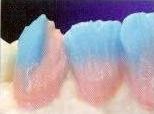 |
Master ceramist will then create the most natural and esthetic restoration by completing the individual case with different kinds of tooth-imitating ceramic powders. |
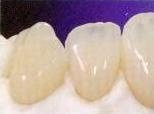 |
This masterpiece is then fired in a special ceramic furnace, thus developing the tooth-like vitality and aesthetics. |
FAQ
Does it require a special cementing tecnique?
No conventinal methods are to be applied
Can it be temporarily cemented?
Yes
Is there any post- op sensitivity?
No because as an insulator it protects again cold or hot sensitivity.
Is it allergic?
No it is bio compatible, Zirconyum Oksit doku doesn’t cause allergy.
Is it opaque?
No
Do we see gum recession?
No according to studies it is proven to be perfectly in harmony with gingival complex,but of course it can not prevent gum recession related to aging or periodontal damage.
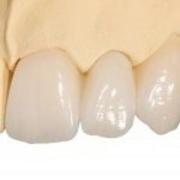 Metalfree IPS Bridges
Metalfree IPS Bridges
IPS Empress is the original pressed all-ceramic, and has been successfully used in clinical situations for the past 10 years. During this time, IPS Empres®s has continued develop and refine this product to satisfy the changing customer and market requirements. With no metal substructure or core material, the light refraction and reflection of IPS Empress® more closely mimics that of natural tooth structure. Testing shows that the wear characteristics of this ceramic are in the range of natural enamel. IPS Empress® pressed reinforced ceramics exhibit nearly two times the strength of conventional porcelains helping ensure long-term esthetics and durability.
The many indications of the material range from veneers to all-ceramic bridges. The system is rounded off by matching cementation materials.
IPS Empress is a material that fully satisfies the physical and esthetic requirements placed on all-ceramic restorations today.
IPS Empress system uses a lost wax technique, with the preheated ingot being pressed into the investment ring. The pressing process occurs at about 1,100 degrees C, depending on whether using the colored or uncolored ingots. When the ceramic ingots become plasticized, they are pressed into the cavity at 3.5 bar. After pressing, there is programmable holding period during which the ceramic accurately reproduces the final detail of the investment cavity, even thin margins. It is this technique that allows for optimum fit of porcelain, with margins of around 20 microns. This , along with the enamel-like wear and kindness to opposing tooth structure, is a major benefit of this ceramic material over conventional porcelain and other ceramic mater.The leucite-reinforced ceramic is based on glass containing latent nucleating agent. IPS Empress, with its revolutionary working technique, opens new horizons in the fabrication of true-to-nature restorations. Following are the advantages of using IPS Empress:
-
Easy handling
-
Outstanding aesthetics
-
Optimum fit
-
High strength
-
Abrasion resistance similar to that of natural enamel
-
Successful clinical use since 1987
Optimal placement is achieved with adhesive bonding however, when a dry field cannot be achieved, cementation with ProTec Cem from Ivoclar can be used.
How Do I Care for a Bridge?
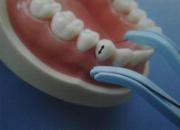
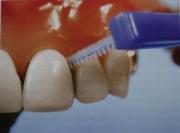
It is important to keep your remaining teeth healthy and strong as the success of the bridge (depending on the type selected) depends on the solid foundation offered by the surrounding teeth. Brushing twice a day ,flossing and using of interproximal brushes or watwer-pik daily helps prevent tooth decay and gum disease that can lead to tooth loss. Your dentist or dental hygienist can demonstrate how to properly brush and floss your teeth. Keeping a regular cleaning schedule will help diagnose problems at an early stage when treatment has a better prognosis. Selecting a balanced diet for proper nutrition is also important.
